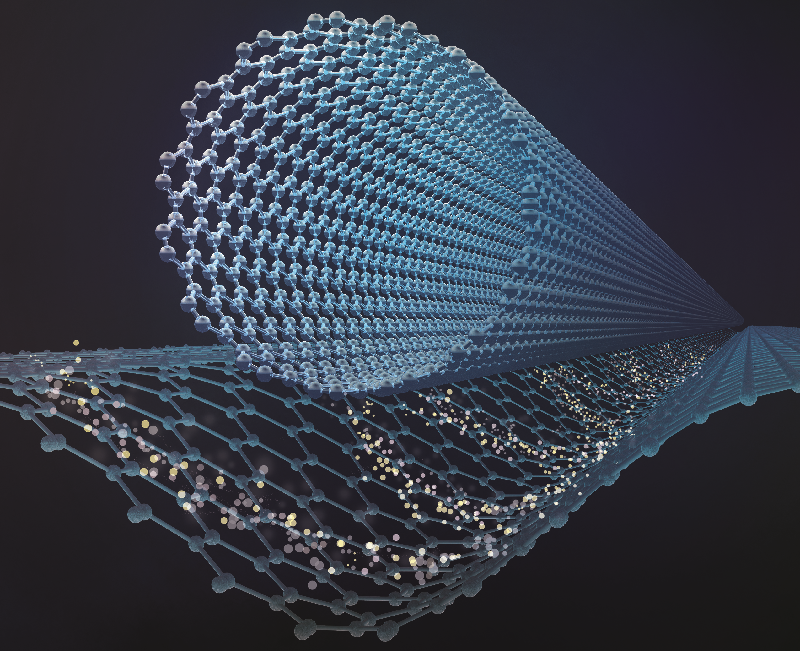American physical Society November 22, 2019
An electron carrying information in its quantum state and acting according to its wave nature can travel though a waveguide, but if multiple modes are available, then the electron can switch between them and lose information. An international team of researchers (USA – MIT, Japan, France) designed a device that includes a graphene flake sandwiched between two insulating sheets. On top of this structure sits a single carbon nanotube. A voltage applied across the CNT induces an electrostatic potential shaped like a rain gutter that extends down into the flake. The potential traps the graphene’s electrons directly beneath the CNT and restricts them to move only along the length of the channel. The electrons thus behave as if they are in a physical waveguide. This waveguide design could provide a platform for controlled transmission of quantum information using electrons, supports compact optics-like experiments with electrons, ultrafast switches and reconfigurable circuits…read more. TECHNICAL ARTICLE

Applying a voltage across a carbon nanotube induces a channel-shaped electrostatic trapping potential for electrons—a waveguide—in an underlying graphene sheet. Credit: A. Cheng, J. Cheng, J. Mok, and J. Stel/Harvard Univ.